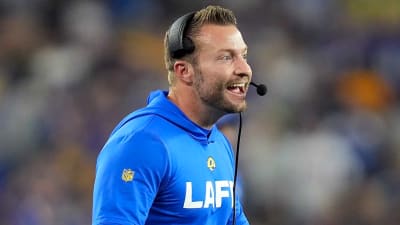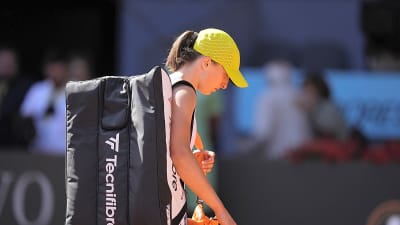
Few realms of American life have changed as dramatically as collegiate sports since the global pandemic known as COVID. From the dissolution of the Pac-12 and the resultant coast-to-coast conferences, to free agency every single year, to the absolute ascendance of football, very little remains of what fans held dear even just a decade ago. Oh sure, young men and women still play games on the court, field and pitch in uniforms emblazoned with their school logos and colors. But very little else is recognizable. It’s a brave new world out there.
I think there are three main reasons why someone would be drawn to collegiate athletics.
The first would be affiliation. I have been a Boston Celtics fan for over 45 years since my uncle took me to John Havlicek’s final game at the Cap Center against the then-Washington Bullets. But I have never lived in Boston, never been a part of a victory parade, never eaten in the same restaurants as the players. But I did attend the University of Virginia; I have walked the Lawn on hundreds of occasions, my second year I studied in the Rotunda, I’ve spent many an hour on the Corner, and made lifelong friends. UVa is a part of me in a way that no sports team can ever be.
The second reason is that colleges, unless you are a fan of the Green Bay Packers, are not subject to the whims of idiot owners. College fans simply do not have to suffer fools like Danny Snyder, Donald Sterling or Bob Nutting. No guy is going to take a beloved team – like Bob Irsay did with the Baltimore Colts or John Fisher is currently doing with the Oakland A’s – and rip them from the community. No one is going to uproot UVa from Charlottesville and transplant it in Mesa, Arizona (the largest city in the US without a major university.) I know basketball fans living in Seattle who haven’t watched an NBA game in 17 years. In a transient world, college sports are more bedrock than any other game in town.
And the last reason is that fans get four years to see young men and women grow up and mature right before our very eyes. Every player’s eligibility comes with an expiration date so players can’t be stashed for very long and growth has to occur pretty quickly. For fans like myself, seeing the progress that Andrew Rohde, for instance, made this year as he matured and grew into his role, was a counterbalance to the overall miasma of this season.
That was then, but in this present, Virginia fans could be forgiven for their feelings of whiplash as Isaac McKneely, Andrew Rohde and Jacob Cofie entered the transfer portal on back-to-back-to-back days. Because that trio epitomized the player-growth model. iMac is the program guy, filling the shoes that Kyle Guy once wore; Rohde making “the leap” in his second year, and Cofie brimming with potential even as he struggled in the heat of ACC play.
All may be gone. (Everyone is feeling the pain: Robert Morris, an NCAA entrant this year, has had their entire starting five hit the portal while Miami, an Elite 8 and Sweet 16 team over two years, lost their top eight players.)
I have long felt that players ought to have the right to move. I’ve told the story many a time of my best friend first year who discovered that UVa wasn’t the place for her, and she transferred to a school that was a better fit for her. She didn’t have to sit out for a year or take community college courses in the interim. She was free to go.
Some of these players made their commitments when they were just 15- or 16-year old kids. I firmly believe that people should have the ability to course-correct.
But what we are living through is something else. Transfers – by whatever metric you want to use, whether just looking at football and men’s basketball, just Division I or just Power 4 conferences, or athletics at every level – have increased three-fold in just the last three to four years. I thought at first that the increase in transfers was perhaps the bursting of the COVID bubble or just the release of pent-up demand. But it’s not slowing down, rather it is speeding up and giving us never-ending free agency. And that’s not good for sport, even at the professional level.
About 30% of college students nationwide transfer over the course of their careers, and two-thirds of this is driven by people who start out at two-year colleges and go on to complete their work at four-year universities. As of 2024, the most recent year that I can extrapolate data for, the macro transfer rate for college students as a whole and Division I athletes is pretty much the same. What is drastically different between the two subsets is the number of transfers that athletes are making.
Take Virginia’s Latasha Lattimore. She was at Texas for a year, Miami for two, Virginia for one and now she’s headed to Ole Miss. Nobody who is actually trying to get an education would go this route because too many credits will be lost along the way.
On the men’s side, incoming Devin Tillis and Jacari White are both on their third school while for Duke Miles (since decommitted), Virginia would have been his fourth school.
Actual students can’t afford to be this indecisive as too many credits just won’t transfer, so the wild-west of unlimited free agency is no longer remotely related to the college experience.
(None of these four players are ever going to sniff the pros, so if they can get a $200,000 payday, how can anyone argue? Beginning post-college life as a second lieutenant, it took me seven years to make $200,000.)
The “amateur” college model is broke for the non-Olympic sports; the coaching staffs and players have long since professionalized so it's to the pros we must turn for any semblance of normalcy.
The rules for free agency are governed by each sport’s collective bargaining agreement, crafted (usually amidst great contention) between the players and the owners. These agreements spell out when free agency can occur, what teams can offer and when, and the advantages that the original teams possess vis a vis other teams. Collegiate sports need their own collective bargaining agreements (CBAs) presumably one for each sport.
Once upon a time, NCAA governance acted as a CBA, but corruption, greed, misogyny and parochialism, long festering but repeatedly punished recently in the courts, have left the NCAA a broken and forlorn institution. For the first time in my life I have found myself wishing that the NCAA was in stronger shape.
Although judge Claudia Wilken has sent both parties back to negotiations in the House case, this is only a delay. The basic framework – schools can pay up to $20 million per year to their athletes – will remain. The kids are going to get paid and they are going to have to be employees of the schools. That means that the Northwestern football team that tried to unionize over a decade ago was just premature. The players are now going to have to unionize and collectively meet with colleges to establish the guardrails that are so obviously missing.
I am sure that the first concern that will be raised is the length of any proposed CBA, given that there will be complete roster turnover every four (possibly five) years. How can it be equitable for incoming freshmen to be bound by an agreement drafted by others? Short answer: it isn’t equitable. But the pros do it anyway. Pittsburgh Pirate pitcher Paul Skenes, who may already be the best pitcher in the majors, is under Pirates' control for four more years. Four more years of being stuck with possibly the worst franchise in baseball.
Since each sport has varying roster sizes and brings in different moneys, there will have to be a CBA for each. That means a patchwork of rules for each sport, but free agency already looks different between the NBA, major league baseball and the NWSL. It will be just as different at the collegiate level. And there will have to be a different commissioner for each sport; again, as it is in the pros.
It will take a couple of years for the dust to settle, even if the powers that be were to adopt this kind of model this year. (Hint: they won’t.) So it’s still going to be a bumpy ride, but hopefully a stronger framework can be fashioned out of this mess and give us all back the collegiate sports that we love.
More must-reads:
- Carson Hocevar paces NASCAR Cup Series practice at Texas
- Rockets force Game 7 with furious final quarter vs. Warriors
- The 'Multiple 20-rebound playoff games in the NBA three-point era' quiz
Breaking News
Trending News
Customize Your Newsletter
 +
+
Get the latest news and rumors, customized to your favorite sports and teams. Emailed daily. Always free!








